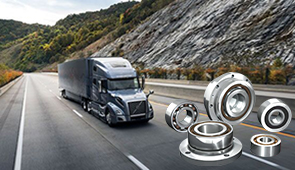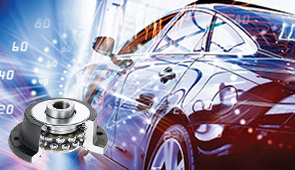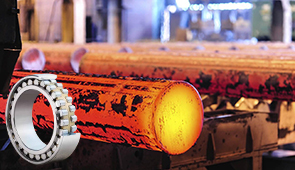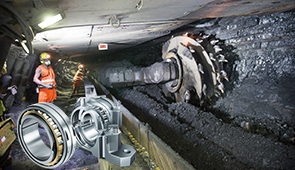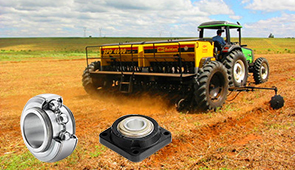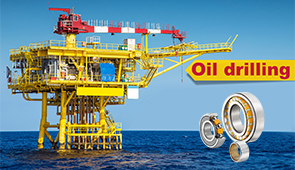Swivel Rod Ends: Understanding Rod End Bearings and Their Applications
Rod end bearings, often referred to as swivel rod ends, are pivotal components across various industries, providing flexibility, durability, and precision in motion control systems. These mechanical articulations are engineered to facilitate both linear and rotational motion, making them indispensable in applications ranging from aerospace and automotive to heavy machinery and industrial equipment. Whether you’re designing complex systems or troubleshooting existing setups, understanding the mechanics, classifications, and practical uses of rod end bearings is crucial. This article explores the fundamental principles behind swivel rod ends, their diverse applications, and essential considerations for selecting the right bearing for your specific needs. Get ready to uncover how this often-overlooked component plays a critical role in ensuring system efficiency and reliability.
Introduction to Rod Ends
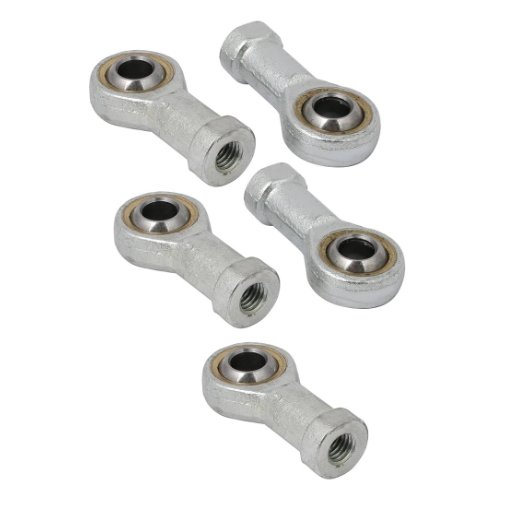
Definition of Rod Ends
A rod end, known alternatively as a heim joint or a rose joint, offers mechanical articulation to join control rods, linkages, or structural steel elements in different machines. It involves a ball swivel inside a cylindrical housing, permitting rotation and angular movement. This flexibility allows it to be used in conditions where misalignment or movement along more than one axis is needed.
Rod ends, primarily based on design and functionality, are typically divided into two categories. The two types are male-threaded rod ends with external threads and female-threaded rod ends with internal threads. These designs offer the benefit of easy integration into different mechanical systems, catering equally to static and dynamic loads. Additionally, common materials employed for the manufacture of rod ends include steel, stainless steel, or aluminum to ensure durability and strength in varying operational atmospheres.
Of utmost importance are applications spanning several industries such as automotive, aerospace, industrial automation, and agricultural equipment. They are mostly used in linkage steering, suspension, and hydraulic cylinders. Choosing the right rod end about its load capacity, environmental conditions, and expected motion requirement will assure its optimization in performance and longevity, given their importance in the precision of motion and integrity of structures.
Types of Rod Ends: Male and Female
Side rods can be generally categorized into two types depending on the design and thread directionality: male and female. In the male rod-end, an external thread allows it to be inserted into a threaded hole or component. It is generally used when an inside threaded part, like a clevis or bracket, must accept it. Male rod ends are a perfect alternative to various means of attachment.
The female rod end has an internal thread and therefore mates with a shaft or part that is male threaded. This makes its design suitable where, in the application, there is little room for the connection or where more flexibility in mounting options is required. Choosing between male and female rod ends is often a matter of the surrounding infrastructure and the specific needs of alignment in the mechanical system.
Both male and female rod-ends can be made from different materials such as steel, stainless steel, or aluminum, and might be treated for surface protection-whether, for example, zinc plated, to improve their life span. Other factors should be taken into account, such as ratings for loads, size of threads, existence of some kind of protective seal, to name but a few, to guide their selection towards the right choice for the requirements of the application and the surrounding environment.
Key Components: Bearings and Balls
Be it a bearing or a ball, each operates as an intermediate mechanical element in numerous mechanical systems that enable smooth motion and minimize friction. Bearings can be designed to operate under radial loads, axial loads, or a combination of both, depending on the intended application. They usually consist of an inner ring, an outer ring, and rolling elements such as balls or rollers, which are separated from each other by a cage to keep them apart and minimize contact. The selection of a bearing depends on the specific application for which it will be applied, including load capacity, rotational speed, temperature, contamination level, etc.
Balls within a bearing primarily serve the function of enabling reduced rolling resistance between the components in relative motion. Manufactured to precision, these balls may be made of various materials such as high-carbon chromium steel, ceramic, or stainless steel. Each material, however, offers peculiar advantages: for instance, ceramic balls are stronger and more resistant to corrosion compared to the steel ones, but also costly. Diameter and surface finish of the balls define how well the bearing will perform, mostly in cases of high speed or heavy loads.
Proper maintenance and lubrication are vital for all bearing and ball sets to extend their useful life and prevent premature failure. Lubricants minimize metal-to-metal contact along with dissipating heat,t and prevent rust or corrosion. Choose lubricants based on operational considerations such as speed, temperature, and load. Also, inspecting the bearings intermittently helps to inform about the wear, such as pitting or spalling on the bearing surface, so that any corrective action can be taken early enough to avoid system downtime.
Components of Swivel Rod Ends
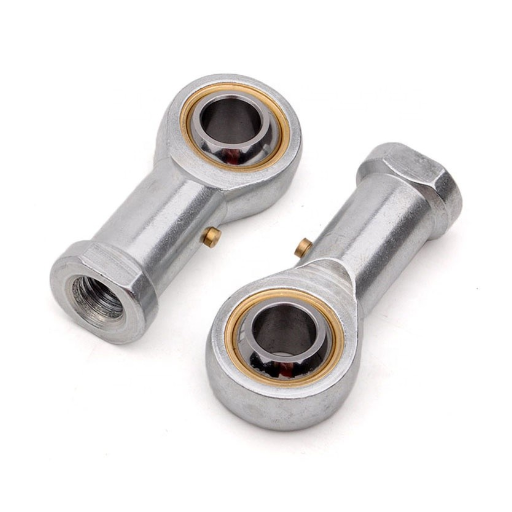
The Role of the Rod
This critical component of a swivel rod end is made to transfer mechanical force or motion while allowing a certain amount of rotational misalignment in a mechanical system. Typically, rods are made of high-strength materials such as stainless steel or alloy steel. The rod is subjected to axial tensile and compressive forces during operation and is required to resist deformation and failure under these applied operational loads. Threaded for convenient incorporation into an assembly, the rod provides secure connection points to mating components; it would usually be externally threaded or internally threaded. The precise machining of the rod surface is also of utmost importance to provide a smooth surface finish against the housing or other joint elements so as to avoid wear and ensure durability.
The rod primarily provides axial alignment while allowing angular rotation. It acts under circumstances where oscillatory motion and dynamic loads are present, such as in automotive suspension systems or aerospace control linkages. The rod, combined with bearings or spherical joints, is designed to withstand axial, radial, or mixed forces under extremely stressful conditions. Furthermore, it has to face various environmental situations, including, in some cases, extreme corrosives or temperatures, which means its surface treatment might necessitate procedures such as galvanizing or anodizing to limit further degradation and maximize life span.
Further development in modern engineering has improved the role of the rod by the introduction of new materials and coatings. Today, composite materials and certain polymer coatings supplement the classical metal designs and provide reduced weight, improved fatigue life, and excellent corrosion resistance. Computational modeling methods, such as finite element analysis (FEA), are also employed during the design to simulate actual stresses and optimize performance. This enables the rod to operate more efficiently and reliably in the most critical systems, where a slight failure can result in working downtime or catastrophic damage.
Understanding the Ball Joint Mechanism
Working for several mechanical and automotive systems, the ball-joint mechanism allows multidirectional movement while still maintaining the structural integrity of the construct. The ball joint is made up of a spherical bearing (the ball) encased within a socket that permits angular and rotational movements. Thus, it is usually applied in the steering and suspension systems of vehicles, allowing smooth transitions and controlled movements under heavy loads.
Being subjected to wear and environmental conditions, modern ball joints are fabricated from high-strength materials such as forged steel and alloy composites. These materials are often modified with some surface treatments, such as nitriding or hard coatings, to improve wear resistance. Lubricating techniques like sealed grease fittings help lower friction, thus considerably improving the life cycle of the joint itself.
The latest progress in ball-joint technology uses state-of-the-art manufacturing methods, with precision machining and additive manufacturing techniques having recently been developed. Analysis methods such as dynamic simulation and real-time stress analysis assist in improving the design of ball joints to ensure performance under extreme operational conditions. This ensures that ball joints can sustain higher load capacities and provide greater operational flexibility in order to fulfill the demanding requirements of modern engineering systems.
Applications of Rod End Bearings
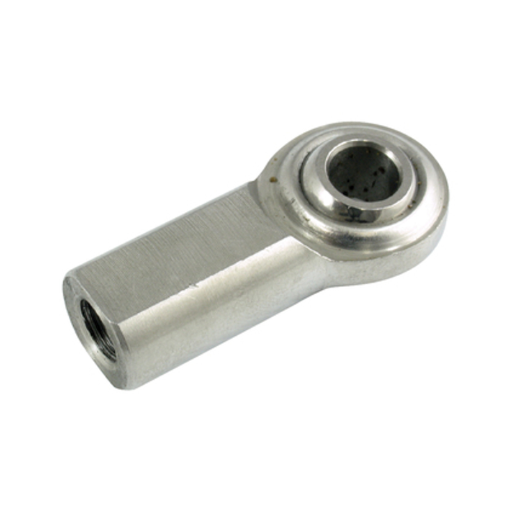
Swivel Rod Ends in the Automotive Industry
The swivel rod ends contribute to enhancing the engineering performance and safety of automotive systems and their durability. These components serve as interfaces in various heavy-duty mechanical assemblies, such as suspension systems, steering linkages, and drive systems. The spherical bearing construction permits angular misalignment and power transmission, which is necessary for maintaining the dynamic balancing and reliability of vehicles under changing operational conditions. Advances in the manufacturing processes of swivel rod ends, leaning heavily toward precision forging and surface coating techniques, greatly improve the strength and wear resistance of these rod ends, allowing them to function under high mechanical stresses and corrosive environments over long periods.
One of the primary benefits accorded to swivel rod ends in the automotive industry is that they allow rotation and oscillation while being simultaneously subjected to very high axial and radial loads. For instance, in suspension systems, these rod ends lessen vibration and road irregularities to smooth the handling and ride quality of the vehicle. Good lubricants with sealed bearing design reduce friction and heat generation for extending life and enhancing overall effectiveness. Such features become highly rewarding in electric and hybrid vehicles, where energy efficiency and long maintenance intervals are the utmost engineering priority.
The advances in the realm of materials, coupled with design optimization, have led to additional applicability of the swivel rod ends in automotive engineering. New materials such as high-strength alloy steels and polymer composites are being employed to up the load-carrying capacity without substantially increasing the weight big factor in contemporary automotive designs emphasizing weight reduction and fuel efficiency. Nowadays, computational tools such as finite element analysis (FEA) and fatigue testing are often utilized during the development phase to anticipate the performance of the components during service. Such technological advances ensure that swivel rod ends continue to uphold the higher level of safety, reliability, and durability that are required in woodworking applications.
Industrial Uses of Tie Rods
Tie rods contribute to the structural integrity and meet the dynamic requirements of various industries. In the area of construction machinery, tie rods stabilize heavy equipment while distributing stresses through it, thereby ensuring maximum efficiency even with extremely heavy operational loads. These components are also part of manufacturing systems that align and keep tension on precision assemblies to reduce vibrations and increase the working life of mechanical systems.
A crucial application in agriculture is that tie rods are used in the steering and suspension systems of tractors and other agricultural vehicles to provide accurate navigation over uneven surfaces. And in industrial fluid control systems, tie rods provide fastening and support for cylindrical elements such as hydraulic cylinders to ensure even pressure distribution under high pressures.
The further enhancement of tie rod applications was brought about by the strategic use of advanced materials like high-strength steels and composite alloys. These provide large strength-to-weight ratios, allowing tie rods to withstand cycles of stress repeatedly without any structural damage. Clearly, with further advances in metallurgy and manufacturing processes, the industrial applications of tie rods will only see wider avenues, thereby guaranteeing their continued existence in high-performance engineering challenges.
Swivel Rod Ends in Robotics and Machinery
Swivel rod ends, or in other terms, spherical rod ends or Heim joints, are major components of robotics and machinery, with their advanced mechanical properties and extensive scope for applications. These components allow rotation and displacement of angular misalignment in complex mechanical setups for maximum flexibility and minimum stress on the parts they join. Generally, swivel rod ends are made from high-strength materials such as stainless steel or carbon steel with a suitable protective coating to provide durability and protection against wear in harsh environments.
Rod ends find their prime use in robotics as components in dynamic joint assemblies and actuator linkages, where proper articulation and load-bearing characterize joint assemblies and actuator linkages. In similar ways, such rod ends in machinery work towards stabilizing and reducing the vibration of structures wherein loads are transferred, such as between hydraulic cylinders or industrial conveyors. By further implementing advanced self-lubricating polymer liners or grease grooves within, their contribution toward maintaining low friction and high-performance long-term operation gets maximized.
On the modern manufacturing front, utilizing CNC machining techniques and additive manufacturing technologies, custom and precision fabrications are now possible, thus enlarging their appeal towards emerging packages such as autonomous systems and collaborative robots. Technical enhancements in the front lay the foundation for further developmental undertakings in load capacity, angular range, and environmental resistance, all ensuring that swivel rod ends will continue to be an indispensable tool for multiple engineering applications along the way.
Choosing the Right Rod End for Your Assembly
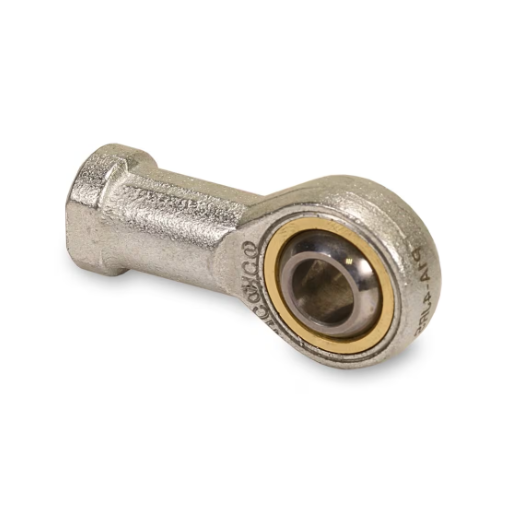
Factors to Consider: Load and Movement
Extensive load and movement analysis should be performed when selecting a swivel rod end. This requires calculating the highest axial, radial, and dynamic force that can be felt by the rod end in an assembly. Improperly rated rod ends will wear out prematurely or fail.
The movement perspective is just as important as load. There must be an analysis regarding the angular displacement and the degrees of rotation needed to accomplish the movements. There can be models allowing for wider ranges concerning angular movement, even multi-axis movement, which is quite necessary in very complex assemblies such as robotic or aerospace mechanisms. There are even environmental considerations; temperature extremes, corrosive exposure, and contamination can lead one to very distinct materials selection and lubrication type for the rod end.
Based on studying these factors one after another, engineers will be able to find rod ends that exactly meet the dimensional requirements and keep proper safety margins for operation in harsh conditions.
Thread and Size Compatibility
The thread and size compatibility remain paramount concerning the optimum performance and safety of a rod end assembly. The threads should match accurately with the mating components to avoid potential problems like thread stripping or binding when put under operational loads. In most instances, rod end threads will be either male or female, with the classes and tolerances varying between them. The thread types most commonly used on a rod end include UNC, UNF, and metric, chosen normally according to what the application requires and what the local standards specify.
Every dimensional aspect, such as thread diameter, pitch, and overall rod end size, needs to be precisely checked against load-bearing capabilities and environmental considerations. For example, choosing a higher tolerance class, such as Class 3 for UNF threads, will ensure a tighter fit and increase resistance to loosening by vibration. Conversely, loose tolerances might prove better for less stressful applications where fast disassembly or assembly is paramount.
Another engineering consideration involves ensuring that the rod end fits into its surrounding components, considering clearances, thread engagement depth, and shoulder dimensions. With the aid of contemporary CAD, complemented by physical prototyping, one can be sure that the rod end will fit well with the rest of the mechanism while retaining its structural integrity once subjected to load.
Installation and Maintenance of Swivel Rod Ends
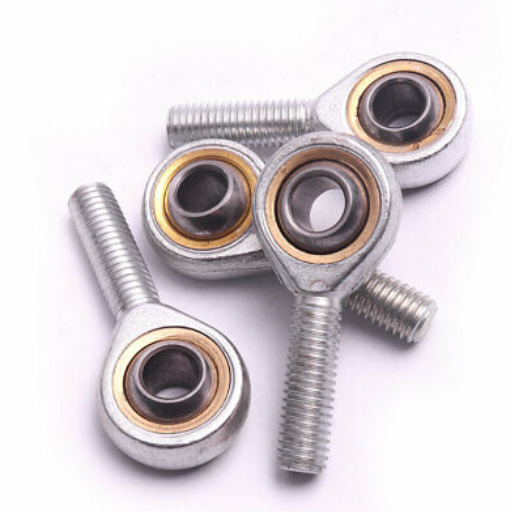
Proper Installation Techniques
The installation of swivel rod ends must follow strict guidelines to enhance the reliability and efficiency of the system. In the beginning, the rod ends must be checked for compatibility with their mating parts concerning thread type, class (if applicable), size, and material specifications as given in the design. An improper selection of components can lead to misalignment, wear, or, in worst cases, failure when put under operational stresses. The installation must be done using a torque wrench to hold torque values recommended by the manufacturer to prevent overtightening or undertightening, any of which can reduce the functionality or safe mode of operation of the joint.
At first sight during pre-assembly, the rod ends should be inspected for any flaws such as cracks, wear, or debris. The threads and lubrication areas should be cleaned properly to keep away contaminants whose presence could interfere with their proper seating or cause rapid deterioration with time. Lubrication, where applicable, must be as prescribed by the manufacturer unless the component itself is a self-lubricating type. Any other lubrication methods may cause binding or slipping, resulting in improper installation.
One may also think of incorporating thread lockers in locations susceptible to heavy vibrations and loosening over time, but this must be limited to applications specified in the design. In cases where resistance or irregular movements indicate some form of misalignment or torque, therefore, its smooth operation must be checked after installation. Bearing this monitoring after installation is essential for verifying whether all are within operational tolerance, thereby enabling an increase in the service life of the assembly. Detailed adherence to these steps will bring the best performance results in safety for both static and dynamic applications.
Maintenance Tips for Longevity
To ensure a robust lifespan and dependable operational performance, a comprehensive, carefully planned maintenance procedure would be vital. This could start with routine inspections to spot early signs of wear and tear, corrosion, or deformation in parts exposed to repetitive motion or environmental factors. All moving parts must be lubricated using the lubricants recommended by the manufacturer to ensure friction is kept to the barest minimum and wear is prevented. Torque settings should also be re-checked at intervals, as a few small deviations may affect the integrity of the system, resulting in inefficiency or outright failures.
Environmental factors should also be assessed on a regular basis; for systems subjected to moisture, dust, or extreme temperature, extra dust-proofing or waterproofing measures should be employed. Such measures can be in the form of seals, covers, or materials resistant to the given temperature, depending on what the system is susceptible to. Further, consider any advanced diagnostic techniques such as ultrasonic testing or thermal imaging to detect internal inconsistencies that would have gone unnoticed during a typical visual inspection.
Predictive maintenance can also serve to prolong an asset’s life. In other words, gathering KPIs such as vibration levels, thermal output, and alignment accuracy with the help of advanced sensing technology is one option that is widely being considered. This will allow maintenance teams to take preventive actions against any impending failure by relying on data and thus reducing downtime and cost of ownership.
Troubleshooting Common Issues
Troubleshooting well requires a paradigm that isolates potential causes and implements a course of action based on evidence. Common problems in mechanical or industrial systems involve things such as improper calibration, wear of critical components, or errors in software integration. These hard issues need a good analysis, starting with real-time machines that watch the entire mechanism and collect the diagnostic data for pinpointing anomalies.
For instance, high vibration levels in rotating machinery might relate to misalignment, imbalance, or a failing bearing. Using advanced vibration analysis tools and historical data on machine performance aids in rooting out the real problem and providing recommendations in a justified manner to either rectify the misalignment or replace affected components to avoid further disruptions in the system.
Temperature anomalies tend to be caused by poor lubrication or thermal expansion, and by using infrared thermography, one can be able to monitor them. It is essential in ensuring non-invasive diagnostics, whereby operators can intervene before degradation in the condition of the system.
Integrating predictive analytics through cloud mechanisms and IoT-enabled devices sets a better foundation for issue identification. Teams get to spot deviations in the early stage by analyzing trends in the sensor data against tolerances specified by manufacturers, thus allowing proactive maintenance to take a front seat before things go wrong.
Frequently Asked Questions (FAQ)
Q: What are swivel rod ends used for?
A: Swivel rod ends are commonly used in various applications, including automotive and machinery, to provide a pivot point for linkages. These joints are used to connect parts that require a degree of freedom in movement, allowing for precise articulation in steering links and other components.
Q: How do I choose the right swivel rod end for my car?
A: When selecting swivel rod ends for your car, consider the specific application, load requirements, and the type of movement needed. Look for reliable products that come in a variety of sizes and configurations, ensuring that they can handle the forces exerted during operation.
Q: What materials are swivel rod ends made from?
A: Swivel rod ends can be made from various materials, including steel, aluminum, and high-strength plastics. Some may also feature rubber bushings or coatings to enhance durability and reduce wear, particularly in high-stress environments.
Q: Can swivel rod ends be used in steering systems?
A: Yes, swivel rod ends are often utilized in steering systems as part of steering links. They provide the necessary flexibility and precision needed for smooth steering motions, ensuring optimal control of the vehicle’s direction.
Q: What is the importance of the nut when installing swivel rod ends?
A: The nut is crucial for securing swivel rod ends in position during installation. A properly tightened nut ensures that the rod end remains fixed, preventing any unwanted movement that could lead to failure or reduced performance of the assembly.
Q: Are there different types of swivel rod ends available?
A: Yes, swivel rod ends come in an assortment of types, including those with male or female threads, different joint configurations, and varying degrees of articulation. This variety allows for customization based on specific applications and installation requirements.
Q: How do I maintain swivel rod ends for longevity?
A: To maintain swivel rod ends, regularly inspect them for signs of wear or damage. Lubricating the joints and ensuring that the fastener connections are secure can help prolong their lifespan. Additionally, replacing any worn bushings or rubber components can enhance performance.
Q: What role do rubber bushings play in swivel rod ends?
A: Rubber bushings in swivel rod ends act as dampeners, reducing vibrations and providing a cushioning effect during movement. This helps improve the overall performance of the joint, ensuring smoother operation and increased durability over time.
Q: Can swivel rod ends be used in custom applications?
A: Absolutely! Swivel rod ends are versatile components that can be used in a wide range of custom applications, from automotive modifications to industrial machinery. Their flexibility and adaptability make them ideal for projects requiring precision articulation and reliable movement.
UCTH213-40J-300 with Setscrew(inch)
CNSORDERNO: Normal-duty(2)
TOGN: UCTH213-40J-300
SDI: B-R1/8
SD: 2 1/2
UCTH212-39J-300 with Setscrew(inch)
CNSORDERNO: Normal-duty(2)
TOGN: UCTH212-39J-300
SDI: B-R1/8
SD: 2 7/16
UCTH212-38J-300 with Setscrew(inch)
CNSORDERNO: Normal-duty(2)
TOGN: UCTH212-38J-300
SDI: B-R1/8
SD: 2 3/8
UCTH212-36J-300 with Setscrew(inch)
CNSORDERNO: Normal-duty(2)
TOGN: UCTH212-36J-300
SDI: B-R1/8
SD: 2 1/4
UCTH211-35J-300 with Setscrew(inch)
CNSORDERNO: Normal-duty(2)
TOGN: UCTH211-35J-300
SDI: B-R1/8
SD: 2 3/16
UCTH211-34J-300 with Setscrew(inch)
CNSORDERNO: Normal-duty(2)
TOGN: UCTH211-34J-300
SDI: B-R1/8
SD: 2 1/8










